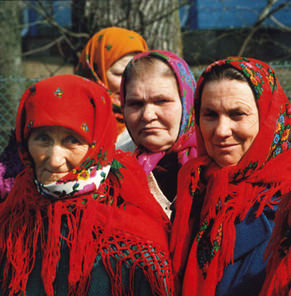Dernières publications
Experience from the French Nord Cotentin Study: Involving Stakeholders in the Dose and Risk estimate Studies
- Détails
- Catégorie : Communications
- Publication : mardi 18 mars 2014 16:34
SCHNEIDER T.
Oral Presentation at the International Workshop on Radiation and Thyroid Cancer, Tokyo, Japan, 21 – 23 February 2014
Abstract
In 1995 and 1997, Pr. J.F. Viel and his team, from the Besançon University, published an epidemiological study questioning a causal relationship between the development of leukaemia in children in the Nord Cotentin region, and exposure to radioactive discharges from the various nuclear installations located in this region, notably the La Hague reprocessing plant. 4 cases of leukaemia were observed between 1978 and 1992 instead of 1.4 cases expected. This study had caused strong local reactions, particularly among mothers of the children living in the area, and had created a controversy between the local and national stakeholders.
In this context, the public authorities appointed two experts groups: one dealing with epidemiological aspects and a second one, the Nord Cotentin Radioecology Group, aiming at assessing the exposure levels of children (0-24 year old) to ionizing radiation and the associated risk of leukaemia. This experiment carried out by this second expert group, led by A. Sugier, was innovative by its methodology (addressing all exposure sources) and by its method of work and composition, involving pluralist expertise and interacting regularly with members of the public in the region.
For two years, experts from French and foreign institutes, NPOs and nuclear industry worked in common in the Nord Cotentin Radioecology Group to build a methodology, collected and analysed a large amount of data on discharges and environmental measurements and compared their point of view on the best way of estimating the exposure pathways of the populations concerned. All the results were regularly discussed with the Local Commission of Information of La Hague reprocessing plant (independent body structured as pluralistic dialogue forums gathering various types of local actors in interaction with public authorities and operators) and with a local group of "Angry Mothers".
The work performed within this group provided useful information besides the results of the epidemiological study. The risk assessment, based on the characterisation of the discharges, the environmental transfers and the exposure of the children during the reference period (1966-1996), largely contributed to objectify the situation and opened the dialogue among the stakeholders on the interpretation of the results. The calculated number of radiation induced leukaemia associated with the historical discharges of the nuclear installations in the Nord Cotentin region and using the linear non-threshold dose-effect relationship was extremely low (about 0.001 case), but the Group clearly mentioned that this calculation was based on available knowledge and needed to consider additional uncertainty analysis.
It is interesting to note that the publication of the results of the Nord Cotentin Radioecology Group was not the end of the process. The recommendations of the Group contributed to the organisation of the epidemiological and radioecological follow-up in the region as well as favoured the reflection on national and European scientific researches on the origins of childhood leukaemia. At the regional level, a cancer registry has been set up under the leadership of a regional network of medical physicians allowing a detailed follow up of leukaemia and other cancers. The results of this follow-up are regularly published in scientific literature and presented and discussed with the local commission of information of the La Hague reprocessing plant. In addition, all the measurements of the radioactivity in the environment performed by the different organisations including NPOs are now collected and accessible through a national network. They are also regularly presented to the local commission of information. Concerning the scientific developments, further researches have been initiated on the analysis of the mechanisms inducing leukaemia and on the analysis of the geographical distribution of leukaemia and the presence of various industrial installations.
In summary, facing a complex issue dealing with health risk, the Group Radioecology Nord Cotentin had allow to set up a process for addressing the issue with a pluralist expertise in interaction with local stakeholders. Efforts had been devoted to better communicate the assessment and additional researches and monitoring are still going on to cope with this issue.

 Le Centre d’étude sur l’Évaluation de la Protection dans le domaine Nucléaire (CEPN) est une association à but non lucratif, fondée en 1976, pour évaluer la protection de l’Homme contre les dangers des rayonnements ionisants, sous ses aspects techniques, sanitaires, économiques et sociaux.
Le Centre d’étude sur l’Évaluation de la Protection dans le domaine Nucléaire (CEPN) est une association à but non lucratif, fondée en 1976, pour évaluer la protection de l’Homme contre les dangers des rayonnements ionisants, sous ses aspects techniques, sanitaires, économiques et sociaux.
